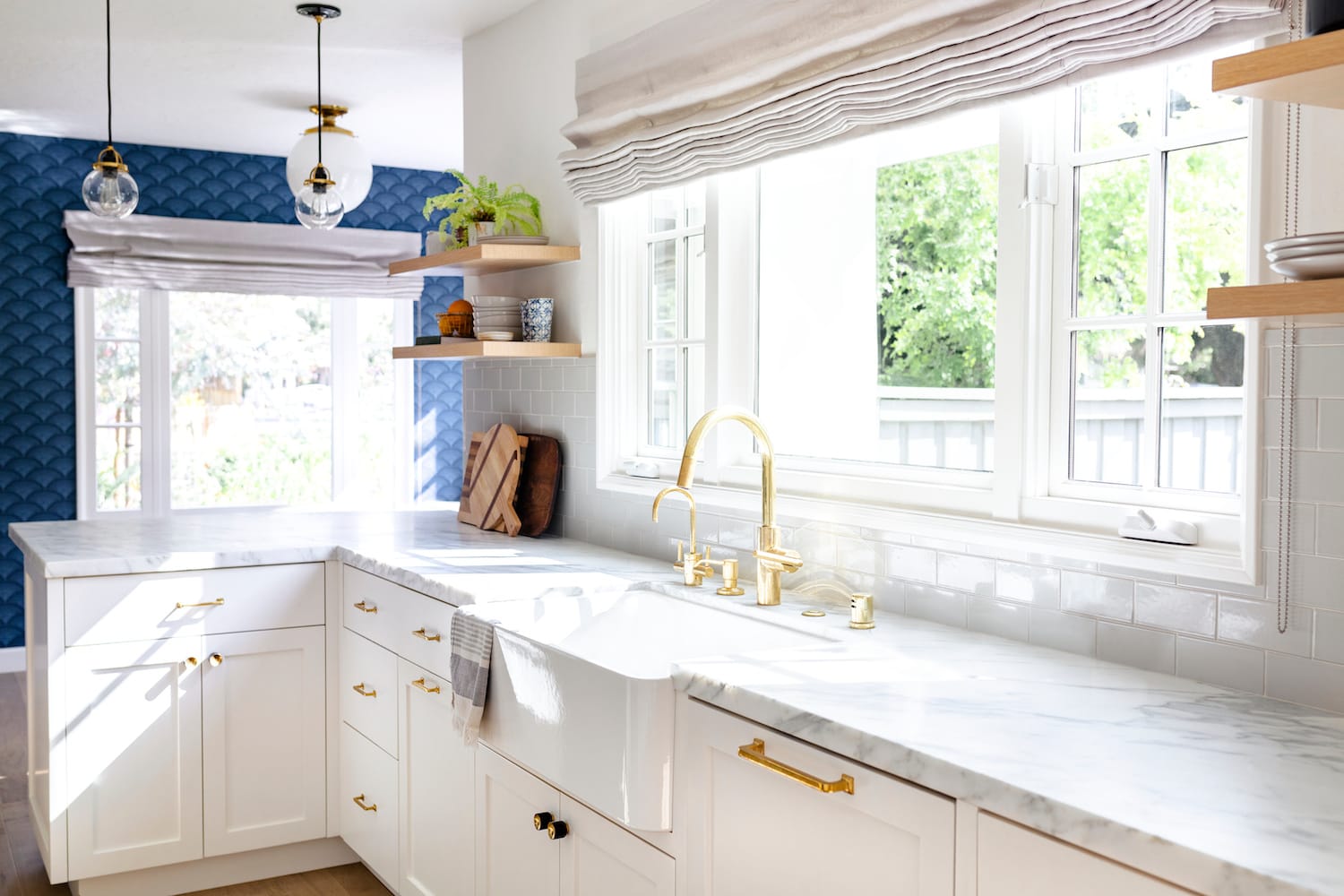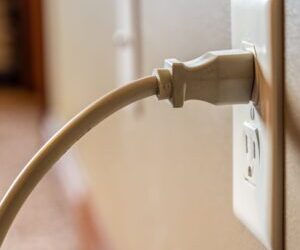When homeowners are tired of bumping elbows with their spouses during dinner prep or arguing with their children about who gets the best chair at the breakfast table, it’s no surprise that they turn to kitchen remodeling projects to improve upon these pain points.
However, the tricky part about kitchen renovations is figuring out how to pay for home improvement projects of such intensity. Fortunately for you (and every other homeowner who’s tired of their old kitchen space), kitchen remodel financing options are available in abundance, and getting loan funding for your renovation project shouldn’t be too hard.
Take time to explore this in-depth guide for homeowners who want to remodel their kitchen, where we talk about:
- personal loans;
- home equity loans;
- lines of credit;
- refinancing;
- and federal programs,
in order to find out which type of financing options for a kitchen remodeling project will be right for you.
5 Kinds of Kitchen Remodel Financing (Pros + Cons) 💰
A kitchen renovation project is one of the most popular undertakings for any homeowner. Aside from having a beautiful new kitchen, it can also help boost your home’s property value for a more positive experience if you ever decide to sell.
That’s because potential buyers want to see:
- Modern appliances
- Custom cabinets
- Updated countertops
- Unique, personalized touches throughout the refreshed space
But with that said, you’ll likely need to spend a decent bit of money on building your dream kitchen.
Lucky for you, several financing options are available to help offset the costs of a new kitchen. If you can qualify for low interest rates and fulfill your monthly payments on time, any of the following kitchen remodel loans might be smart to pursue.
Explore the pros and cons of each financing option below before determining which is the right route to take to remodel your kitchen.
1.) Personal Loans
The first type of funding we’re going to talk about is probably the easiest one to get credit approval for, making this a popular option among homeowners from all socioeconomic backgrounds, but that doesn’t always mean it’s the best choice for every borrower.
A personal loan is an unsecured loan, meaning you won’t have to put down money or collateral to get funding. That sounds nice, right? Although there might be some advantages to a personal loan, there are also plenty of drawbacks to take into consideration before deciding if a personal loan is the right option to fund your kitchen remodel project.
✅ Pros:
- Widely available from a variety of lending services
- Loan proceeds are typically disbursed within one business day of approval in a lump sum
- The application process is usually quite simple
- Many personal loans can be applied for online
- Little to no requirements for credit score or credit history
- Can be beneficial for covering the costs of a minor kitchen remodel or home improvement project
- Loan amounts are flexible and you won’t need to disclose the loan purpose
- Collateral isn’t required to receive a personal loan
🚫 Cons:
- Commonly comes with high interest rates or annual percentage rates (APR) than a secured loan
- Payback periods are much shorter than other loan funding options
- Often has a high origination fee
- Penalties for missing monthly payments are higher
- Not a good option for covering major renovations
2.) Home Equity Loans
For established homeowners who have a solid track record of personal equity, a home equity loan might be a better option. Unlike unsecured loans, home equity loans are backed using your home as collateral, meaning your interest rate may be lower than with a personal loan. To get a home equity loan, you must deduct your outstanding mortgage amount from the current home value.
A home equity loan can be cost-effective in the long run, but you’ll have to wait to receive your funding, and the application process often requires extra steps compared to other loan options. Let’s look at more pros and cons of a home equity loan:
✅ Pros:
- Good option for established homeowners with decent amounts of home equity
- Interest can be deducted from your taxes if funding is used for home improvements
- You can qualify for a home equity loan with a less than stellar credit score, as long as you have established home equity
- Larger loan amounts are available depending on your home equity amount
- Loan terms can feature lower interest rates and APR, and longer repayment terms for qualifying homeowners with good equity
- Can be paid off in monthly installments or all at once in an agreed-upon timeframe depending on your loan repayment terms (typically paid off in 5-30 years)
- This is a fixed rate loan, so your interest rate won’t change with market fluctuations
🚫 Cons:
- Your home is used as collateral, so it can be taken away from you if you fail to repay the loan
- You must have enough equity to qualify (often a challenge for first-time homeowners)
- A professional appraisal is required to determine the home equity loan amounts
- Not all applicants qualify for large loan amounts, especially if there’s still a solid amount of a mortgage to pay off
- Approval takes days or even weeks, so you won’t receive the funding right away
3.) Home Equity Line of Credit
Though the names might sound similar, there are actually several stark differences between a home equity loan and a home equity line of credit (HELOC). While home equity loans offer a lump sum of funding for your project, a home equity line of credit acts as a revolving credit line that you can continue taking from throughout the duration of your designated draw period.
Home equity lines of credit usually come with a 25-year term that’s broken up into two periods:
- The draw period, which will last for 5 to 10 years, where you can continue borrowing as much as you need within your credit line, and make interest-only payments during this period.
- The repayment period which lasts for 10 to 15 years, when you must pay of the principal loan amount plus the interest.
If you’re confident in your ability to pay off the home equity line of credit within the agreed upon terms, this might be a valuable tool for you to tackle a kitchen remodeling project plus other home improvements within the draw period.
✅ Pros:
- Interest can be deducted from taxes as well
- Flexible, revolving line of credit that can be used for various purposes within the draw period
- Repayment terms extend far longer than other funding types
🚫 Cons:
- Your home is used as collateral, which can be risky
- Many homeowners tend to overborrow with a home equity line
- Interest rates are variable, meaning they might change over time
- Your interest rate will typically be higher than with a standard home equity loan
- Difficult to get approval without solid credit history and significant home equity
4.) Mortgage Refinancing
You can always refinance your mortgage to afford a kitchen update. This will replace your existing mortgage with a new mortgage and rates, typically including a lower interest rate and flexible monthly payment plan.
✅ Pros:
- Helps improve your current mortgage terms
- Leftover loan funds can go towards your kitchen remodel
- Makes sense for homeowners who’ve had significant changes to their salaries over the years
🚫 Cons:
- High appraisal and origination fees
- You’ll have to pay taxes on the loan amount
- This resets the clock on your mortgage
5.) Federal Programs
Homeowners can also explore government-backed mortgages, which allow you to take out a loan based on what your home’s after-renovation value will be. These two government loans can be used to refinance your home and pay to update it, or even to purchase a new home instead, and can often improve your borrowing power significantly:
While government loans can be a good option for some people, they still have certain drawbacks too. Take a look:
✅ Pros:
- Often increases borrowing power significantly
- Comes with a government-backed guarantee
- Solid funding outlet for homeowners with poor to fair credit score
🚫 Cons:
- Lengthy, complex application process
- Funding dispersal is often delayed
- You’ll need to refinance your home to apply
- Costly mortgage is required
Considerations for Kitchen Remodel Financing 🤔
Now that you know about the ins and outs of different kitchen remodel financing options, you can start to think about which one will work best for your unique needs and financial circumstances. Consider these critical factors before deciding what’s right for you:
Budget
Of course, you’ll need to consider your monthly and yearly budgets before applying for a home improvement loan. If you’re already stretched thin or have several outstanding loan payments, it might not make sense to take out a loan or start a new line of credit. You want to ensure you’re going to be able to meet the repayment terms each month without issue.
Home Value
Another important aspect to think about when choosing the kitchen remodel loans that work best for you will be your current home value. You’ll need this information for a home equity line of credit or home equity loan, as well as the amount of your mortgage that’s left to pay, to determine your loan terms and amount. If you don’t have a lot of home equity, or your home value is relatively low, other options might be right for you over home equity outlets.
Personal Credit
Same as when you buy a car or apply to live at a new apartment complex, your credit history will have a lot of impact on whether or not you can get approved for a kitchen remodel loan.
Financial institutions will pull a credit report from the three primary credit bureaus to determine your creditworthiness or ability to pay back the loan. Secured home equity loans typically require excellent credit, while unsecured personal loans are more attainable for people with poor credit, so you might have a better chance of being approved for one over the other.
That’s why it’s crucial to assess your personal credit score to see what’s going to be the financing method that makes the most sense for your unique circumstances.
Current Financial Obligations
You’ll also want to consider any other outstanding financial obligations that you’re currently dealing with. If you already have a car payment or student loans to worry about, you might want to prioritize those payments prior to seeking another funding outlet for your home improvements.
Priorities
As we just mentioned, it’s important to prioritize what your family really needs first before applying for kitchen remodel funding. Maybe you’re in need of a new washing machine in the laundry room, or you just paid for an expensive family vacation. If that’s the case, it might not be the right time to find funding for your kitchen remodel.
Tips for Making Your Monthly Payments 💸
Staying on top of monthly payments can be a challenge for many homeowners since financial responsibility is a character trait few people possess without lots of practice.
If you find yourself struggling to meet your monthly payments on time, try out some of these helpful tips:
- Make a list of all of your monthly loan and bill payments.
- Create a monthly calendar with regular reminders to pay your outstanding bills.
- Set up a savings account strictly for holding the funds for your loan payments.
- Opt-in to automatic payments whenever possible. (Your financial institution might even offer an autopay discount.)
- Ask if it’s possible to schedule your payment date for a day each month that works best for you (i.e., right after payday).
- Treat your monthly payments like any other utility, and work them into your monthly and yearly budgets.
- Select kitchen remodel loans without any penalties for pre-payment listed in the loan agreement. Why should you be punished for paying off home improvement loans early?
- Always meet your minimum monthly payment even if you can’t contribute a great amount at that time—although it’s always better to pay more when you can to keep your personal credit in good standing.
- Inject other money saving tips into your daily life to ensure you’re able to meet monthly payments on time.
Bottom Line: What’s the Best Option for Me?
There’s no one clear cut answer to the question of what the best kitchen remodel financing options is out there. It will all depend on your unique needs and personal financial decisions.
But if you still feel like you don’t know what’s the right route for you, don’t get too worried — Homeworx is here to help figure out all of the nitty-gritty financial aspects of each financing tool, so you can choose what’s best for you.
No matter what your budgeting or financing needs might be, we’re here to help figure everything out in order to make your upcoming kitchen remodel a feasible project. Put your trust in our experienced home remodeling team to tackle your kitchen renovation while staying right on budget.
Contact us today to get started.






0 Comments